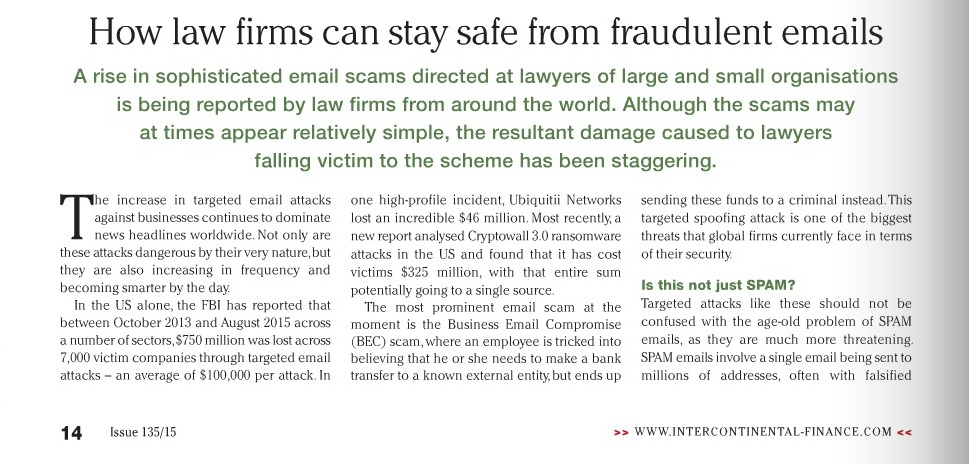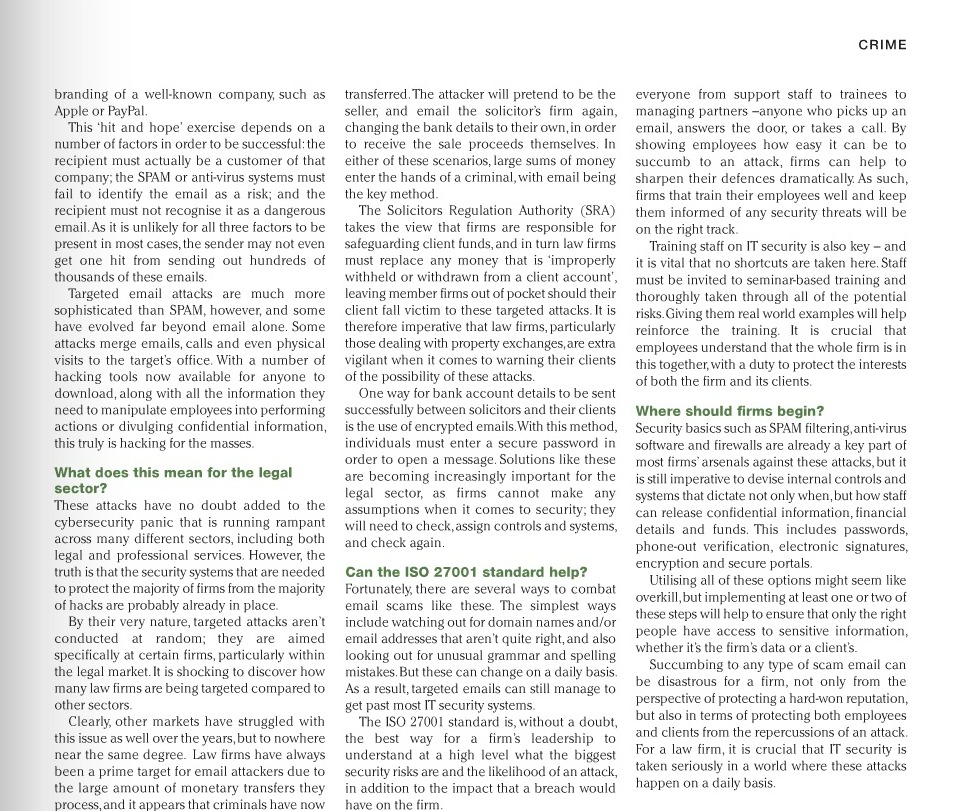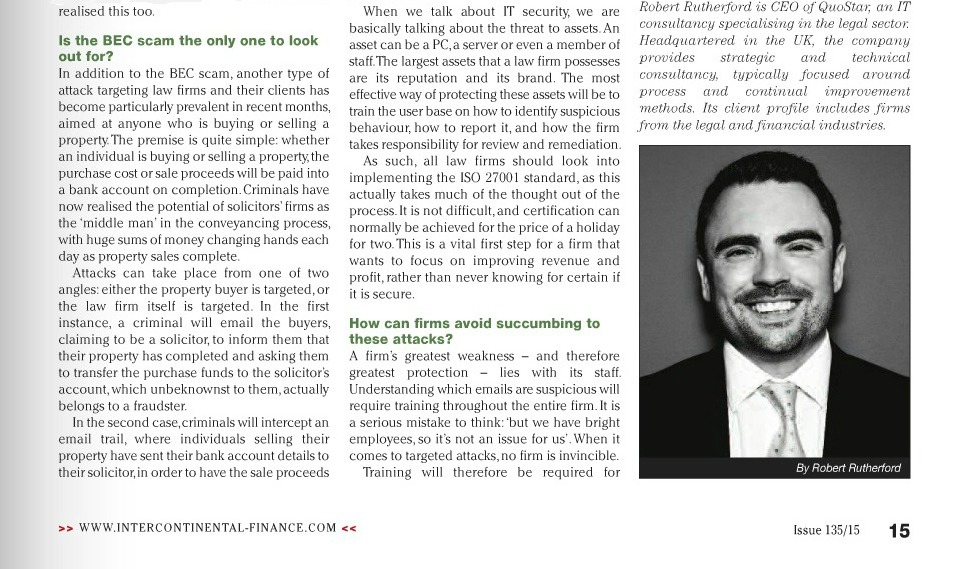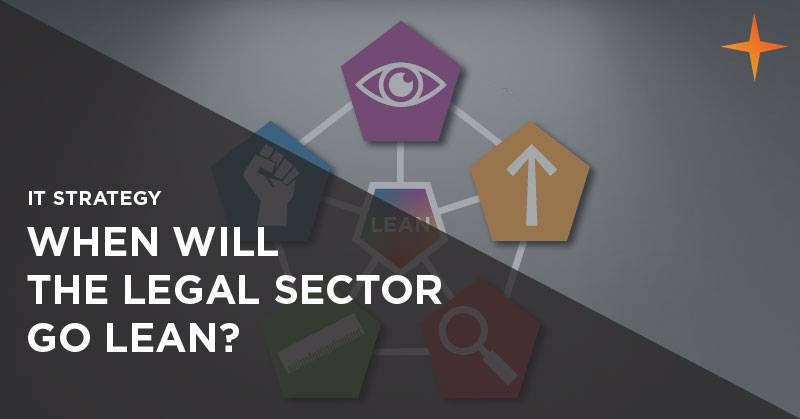
As we all know, the legal sector is changing and changing fast. Several emerging challenges in the sector are driving this change, namely: globalisation, shrinking margins and innovation. But whilst change can be uncomfortable, failing to adapt means you die.
This may seem like a scary prospect (and it is) but the legal sector has the advantage of not being the first to go through these challenges. The world of manufacturing has suffered from the exact same problems of globalisation, shrinking margins and innovation and what separated the winners from the losers in that sector was their ability to leverage a set of principles known as Lean.
Manufacturers who both used technology to provide a competitive advantage and understood and implemented the principles of Lean become experts at adjusting to rapid change – something that law firms have traditionally resisted. However, as the pace of change increases in the legal sector, it’s something you will need to start doing.
So, to keep you interested, how will Lean help your legal firm? In short, you’d use proven business tools and strategies to allow you to survive and thrive in shifting sands, by:
- Lowering overheads
- Improving delivery times
- Increasing client satisfaction
- Pricing work more accurately
- Freeing up resources across your firm
- Making lawyers more efficient
- Improving margins!
What is Lean?
Lean was born in manufacturing and was originally developed and used by Toyota engineers in the ’40s. Now, as you’d expect with continual improvement Lean has changed and matured. Generally, today when most people talk about Lean they are talking about Lean Six Sigma. This process was developed by Motorola in the late ’80s and is still widely used by all sectors, from finance through to retail. You’ll know that it’s not common in the legal space, very bizarre.
In short, Lean was born for the ‘systematic’ elimination of waste (“known as Muda”) in a process. Lean also seeks to identify and eliminate waste through overburden (“Muri”) and waste created through unevenness (varying) workloads. There is also a focus on the client who consumes a particular product or service around “value”. So it’s about reducing waste internally and increasing value for the client.
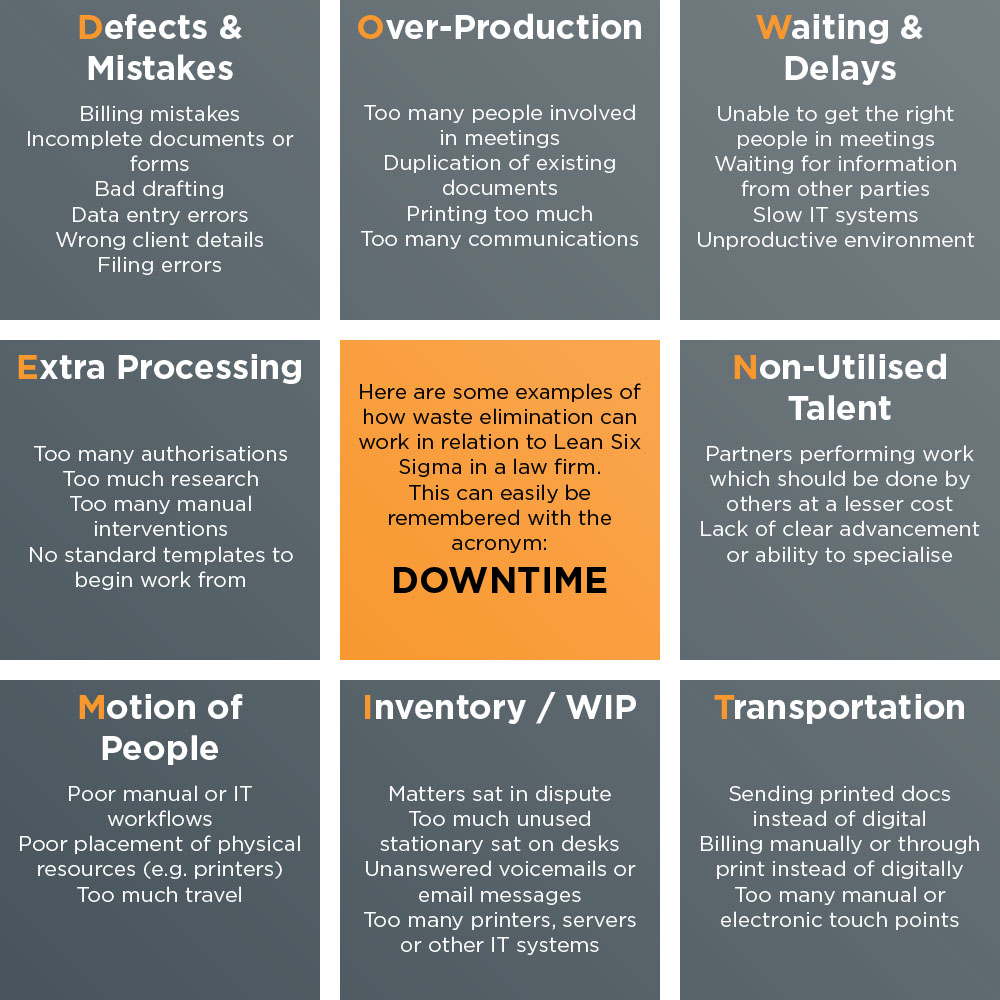
Now, if the potential here isn’t exciting you, you may be in trouble. If you also think you are already all over these elements, then I’ll almost guarantee that you aren’t. There is always room for improvement, everything can be improved. It’s about prioritisation. Prioritising what improvements deliver the greatest gain to the firm and ultimately the client. I’m a big believer in win-win relationships and that means the client has to be your partner, not simply a bill payer.
How does lean deliver improvements?
Lean uses the acronym DMAIC to structure improvement, generally continuous improvement, which is of course absolutely essential in a law firm in this day and age. DMAIC is always applied in the order shown below and stands for:
Define
- Identify the business/process issue
- Record the requirements of the client and the firm
- Finalise the project focus
- Define the project scope
Measure
- Collect the required business data
- Determine the performance of the process
- Clarify the business opportunity
- Identify quick wins where possible
Analyse
- Undertake root cause analysis
- Quantify the opportunity for gain
- Prioritise root causes
Improve
- Understand and develop potential solutions
- Develop and select evaluation method and criteria
- Evaluate risks
- Optimise solution
Control
- Monitor and adjust
- Ensure desired gains are delivered and sustained
- Standardise gains through standardisation
The above obviously goes around and around in a continual cycle. It’s surprising how many firms don’t have live documented processes and procedures. If you don’t have SOP (Standard Operating Procedures) then you are going to have to start. If you don’t have processes defined, how can you evaluate them and improve them?
Why is Lean particularly relevant in law firms?
This is the biggest issue – legal firms, in essence, are simply a business, predominately a service business and a consulting firm. Individually, they aren’t particularly different in what they do (although the individuals inside a firm of course have their specialisms). This means that a client choosing between one firm which hasn’t adopted Lean and still has a lot of waste (and thus, higher costs) and another firm that has adopted Lean, the client will choose the Lean firm every time.
A significant number of law firms have been way behind the curve in innovation for a long time and some who believe they are innovative are not. Not when you look at the advanced systems, processes and structures in other sectors. To begin making some real forward change, law firms need to start at the beginning and audit their existing systems to identify waste.
For Lean to be effective, firm leadership must embrace the principles. You can’t delegate and forget – leadership must be responsible, passionate and championing the reduction of waste and continual improvement in a firm. If you don’t do this then your competition will be, or an entity that isn’t even a competitor right now will be. Change in the legal sector isn’t a threat to those who embrace Lean – it’s an enormous opportunity and one you’re missing out on right now.






